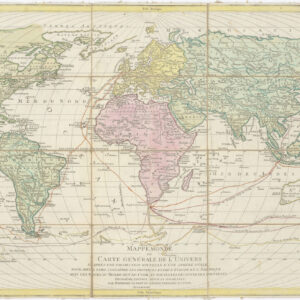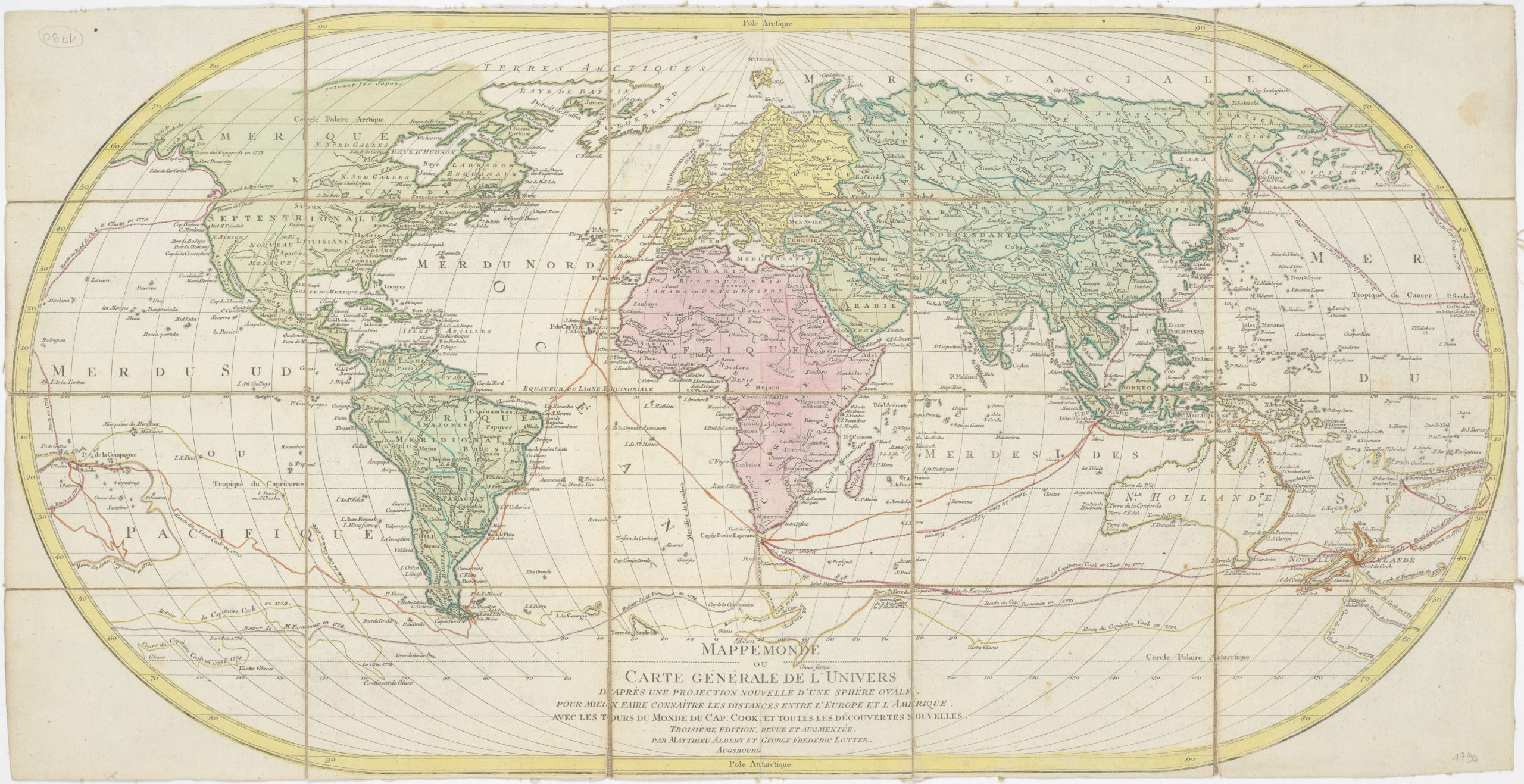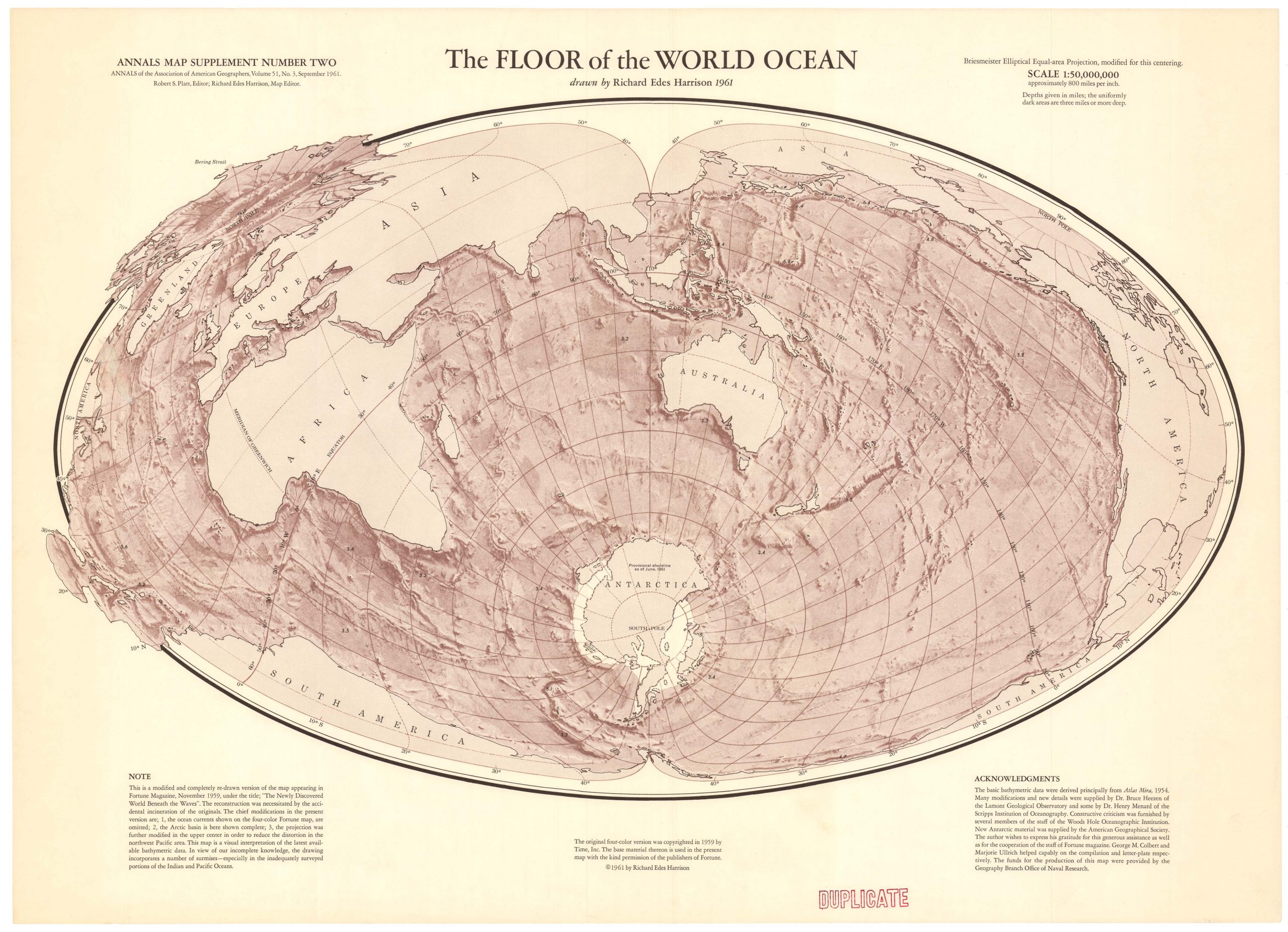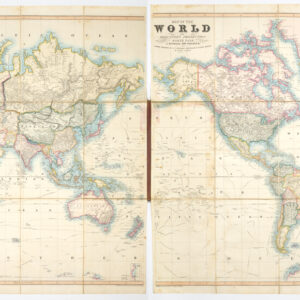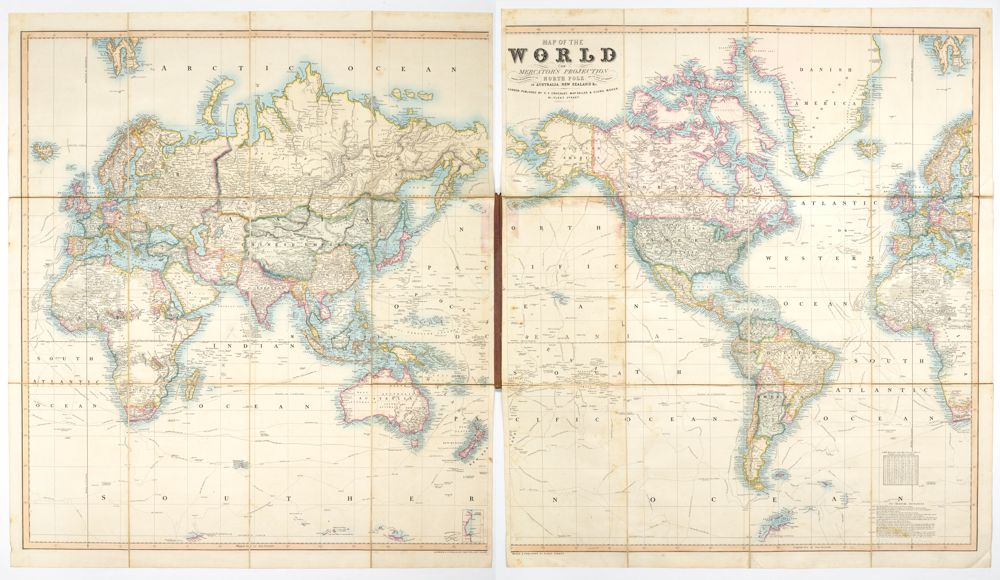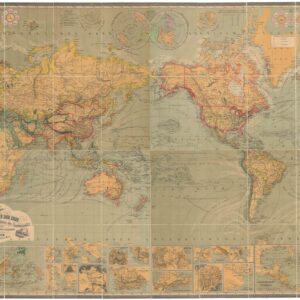A satirical look at The World According To Ronald Reagan [First State].
The World According To Ronald Reagan
Out of stock
Description
This pictorial map is a classic example of the satirical political humor that characterized late Cold War cartography. It depicts the world as understood by the new American president and former actor, Ronald Reagan, and applies the age-old remedy of comedy to a most frightening global situation.
The map was drawn as a caricature by eminent satirical cartoonist David Horsey and printed lithographically in black and brown by AA Graphics in Seattle. Measuring an impressive 36 x 24 inches, it appeared for the first time in 1982, just a year or so after Reagan had taken office and at the height of the Cold War. It treats us to a humorous take on how Reagan perceived the world of the early 1980s, playing not only on his cowboy reputation and attitude but also on the simplistic black and white thinking that he often was accused of by his political rivals.
The map is dominated by two main characters, who were also the lead actors during this stage of the Cold War. In America, we have the gun-slinging cowboy-president Ronald Reagan, around whom this map centers. His rival and counterpart is the equally ready Soviet president, Leonid Brezhnev, who dominates the entire eastern half of the world. While the Russian bear is donned in the furs of a Siberian Cossack, Reagan is depicted as a sheriff with hands twitching over his holstered six-shooters as he eyes his rival in the USSR. He does so from a dramatically enlarged and exaggerated California, which occupies half of the United States and is meant to reflect Reagan’s distorted “Hollywood” view of the world.
The remainder of the nation is essentially the subject of an un-nuanced division between the Mid and Southwest, labeled ‘Republicans and Other Real Americans,’ and the North-East, labeled ‘Democrats and Welfare Bums.’ A few regional characterizations have been added in the West as well, with San Francisco docketed as full of ‘Homos,’ while the coasts of Washington and Oregon have been delineated from the rest of those states as ‘Ecotopia,’ reflecting just how long environmentalists have been warning us about the condition of our world.
Outside the United States, the map is filled with poignant and hilarious labels. Both Central and South America have been dramatically reduced to reflect their insignificant role in global political affairs. Many parts of the Latin American world (and indeed the world at large) have been tagged in a manner that perhaps would not be acceptable today but which in the 1980s constituted a framework for political satire and humor. Thus, a small Mexico is labeled Mariachi Land, El Salvador – America’s only true ally in the region – has been disproportionately enlarged and correctly labeled, while the entirety of South America has been reduced to a diminutive blob labeled Banana Land.
Separating the two American continents, we find ‘Our canal’ in Panama – a subtle reference to the CIA’s involvement in maintaining revolutionary puppet rulers that the Americans could control (i.e. first Omar Torrijos, and from 1981, Manuel Noriega). Should someone overlook the deliberate diminishment of South America, the warped view is heavily underscored by the fact that the tiny South Atlantic archipelago of the Falklands here has been depicted as roughly the same size as the entire continent they belong to. The choice to emphasize these islands in such a dramatic fashion was due to the Falklands War, which played out between the British and the Argentinians during the spring of 1982.
In the Caribbean, we find the ‘Soviet Colony’ of Cuba, and across the Atlantic, we are treated to an entirely new set of humorist characters and labels associated with Europe and Asia; not to mention the dominance that the USSR exercised over both (at least in Reagan’s view). The most important of these is the United Kingdom, which this map characterizes not only as Thatcher-Land, but which has been allocated the important byline of “(REAGANOMICS PROTOTYPE).” Both continental Europe and Africa have been reduced to almost nothing, with the first consisting of ‘Socialists & Pacifists’ and the other of a geographical subdivision between ‘Egypt’ and ‘Negroes’.
Between the United States and the Soviet Union, the most exciting region is perhaps the Middle East. Resonating with how things have developed in the forty years since this map was published, the Middle East has essentially been reduced to three strips. We find an abnormally enlarged Israel that contains Beirut along the Mediterranean coastline. Beyond this is nothing but the Saudi Peninsula, the most important feature of which is the fact that it contains ‘Our Oil.’ And beyond that, in Iran, we see the label ‘Muslim Fanatics.’ This characterization stems from the Iranian Revolution in 1979, but, notably, the American position has hardly changed since. A final mention should be made of the inclusion of a proposed Palestinian Homeland on the map, which we find with biting irony on the Arctic island of Spitzbergen, in the northernmost part of the map.
Last but not least, let us take a quick look at Asia and the Soviet Union. We have already mentioned Brezhnev’s costume, but it is also worth noting that instead of the six-shooter carried by Reagan, the Soviet General Secretary carries atomic warheads in his holster. Similarly, long-distance rockets have been placed along the borders with Europe, indicating that the Soviets are ready to engage in the mutual annihilation of nuclear war. The label encapsulates how Americans perceived the Soviet peoples at this stage, for under a large ‘USSR,’ the bracketed subtitle informs us that here be ‘Godless Communists, Liars and Spies.’ Beyond the Soviet Union, we see a disproportionately divided China consisting of two roughly equal parts: Mainland China, or in this case Their China, and Taiwan, or as is stated on the map: Our China. Furthest east, we find Japan shaped as a Toyota and labeled the ‘Japan Corporation,’ reflecting American fears that this Asian super-economy would outcompete US producers of cars and electronics.
Overall then, this map portrays, in a most humorous fashion, an era that a lot of us still remember vividly. To those born after 1989, it is hard to imagine the societal impact of the Cold War as it played out in the 1970s and early 80s (although, with the recent conflict in Ukraine, younger generations are getting a taste of Russian aggression). Many people were legitimately frightened by the mutually ensured destruction that nuclear war and atomic winter would cause. This not-so-distant reality has become distant even to those who learned to ‘duck and cover’ and had large stashes of canned food and iodine tablets in the cellar.
But in the early 1980s, it was still an extremely prescient issue. The fact that the 1980s was a decade of immense changes in the balance of global politics and potential military conflict is reflected in the fact that in 1987, David Horsey had to compile an expanded ‘Second State’ of this map. In this version, Brezhnev has been replaced by Mikhail Gorbachev, and leaders like Margaret Thatcher and Moammar Ghadafi have gained such prominence that the artist thought it merited their inclusion as actual characters on the map. This original edition of the map is thus a veritable snapshot of the political history of the late 20th century.
Cartographer(s):
David Horsey (1951-) is an illustrator who was working for the Seattle Post Intelligencer when he drew one of his most famous illustrations: a satirical map entitled The World According To Ronald Reagan (1982; reissued in an updated state in 1987). After graduating with degrees from the Universities of Washington and Kent (England), Horsey entered journalism as a political reporter. He covered major international events and worked as a correspondent in Europe, Japan, and Mexico.
A two-time winner of the Pulitzer Prize for editorial cartooning (1999 & 2003), David Horsey’s work was syndicated by Tribune Media Services and appeared in hundreds of different media outlets. Nevertheless, his primary position was as a political commentator and cartoonist for the Los Angeles Times. He has published eight books of cartoons, including the recent “Draw Quick, Shoot Straight” (2007) and “Refuge of Scoundrels” (2013).
Condition Description
Excellent.
References
